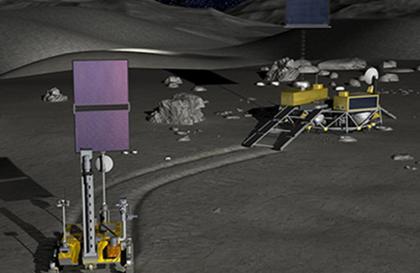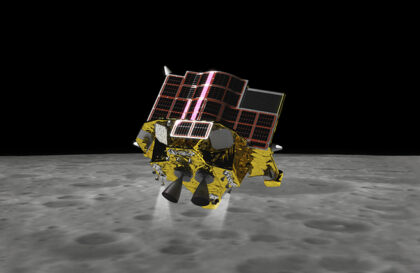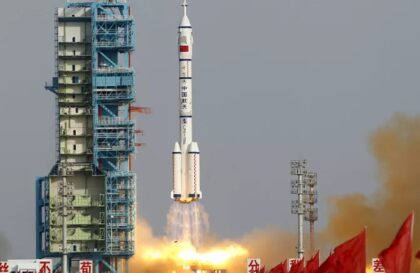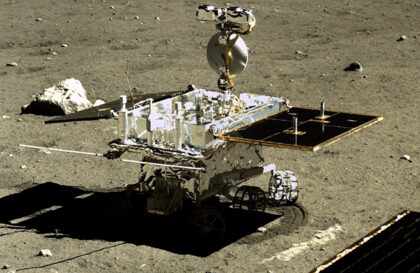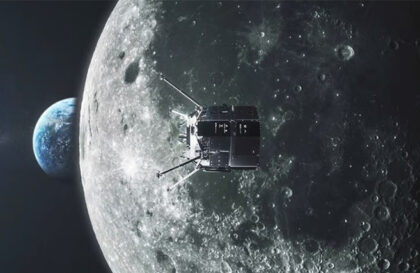China has successfully landed three spacecraft on the moon.
Chang’e-3
In 2013, Chang’e-3 made the first soft landing on the moon in the history of Chinese space exploration (and the first in 37 years, after the Soviet AMS Luna-24).
As part of the Chang’e-3 program, a telescope for ultraviolet observations was delivered to the moon, the lunar rover was equipped with a panoramic camera, infrared and alpha-X-ray spectrometers, as well as a georadar for studying the geological structure of the moon to a depth of 100 meters. The program assumed an annual activity of the lunar station and a three-month activity for the lunar rover.
The 6-wheeled Yutu lunar rover, weighing 140 kg, could reach speeds of up to 200 meters per hour.
Chang’e-4
In 2019, the Chang’e-4 mission is the first mission in the world to land on the far side of the Moon, opening up new possibilities for radio astronomy because there is no interference from the Earth. The Yutu-2 rover explores the landing area inside a large lunar crater, the South Pole-Aitken Basin, which contains important data about the past of the Moon and the solar system.
Radiation measurements were also made on the Moon, and the radiation level on its surface was 1.9 times higher than on the International Space Station and 200 times higher than on Earth.
In a sealed container on board the station, for the first time in history, seeds germinated on the surface of another celestial body: cotton, rapeseed and potatoes.
Chang’e-5
China’s Chang’e-5 mission brought back samples from a geologically young and unique region of the Moon, revealing the complex history of its thermal evolution. The mission was a milestone as China became the third country in the world to be able to return samples from the Moon, and the first to do so since the Soviet Luna 24 mission in 1976.
In samples of lunar soil brought back to Earth, scientists have found a water content of 120 parts per million (ppm), shedding light on the origin of this water associated with the solar wind.
In addition, Chinese researchers have discovered a new phosphate mineral in lunar basalt, the sixth mineral discovered on the lunar surface by humans.
Image credit:
https://www.scmp.com
https://newatlas.com
https://www.nasaspaceflight.com
https://www.newscientist.com

